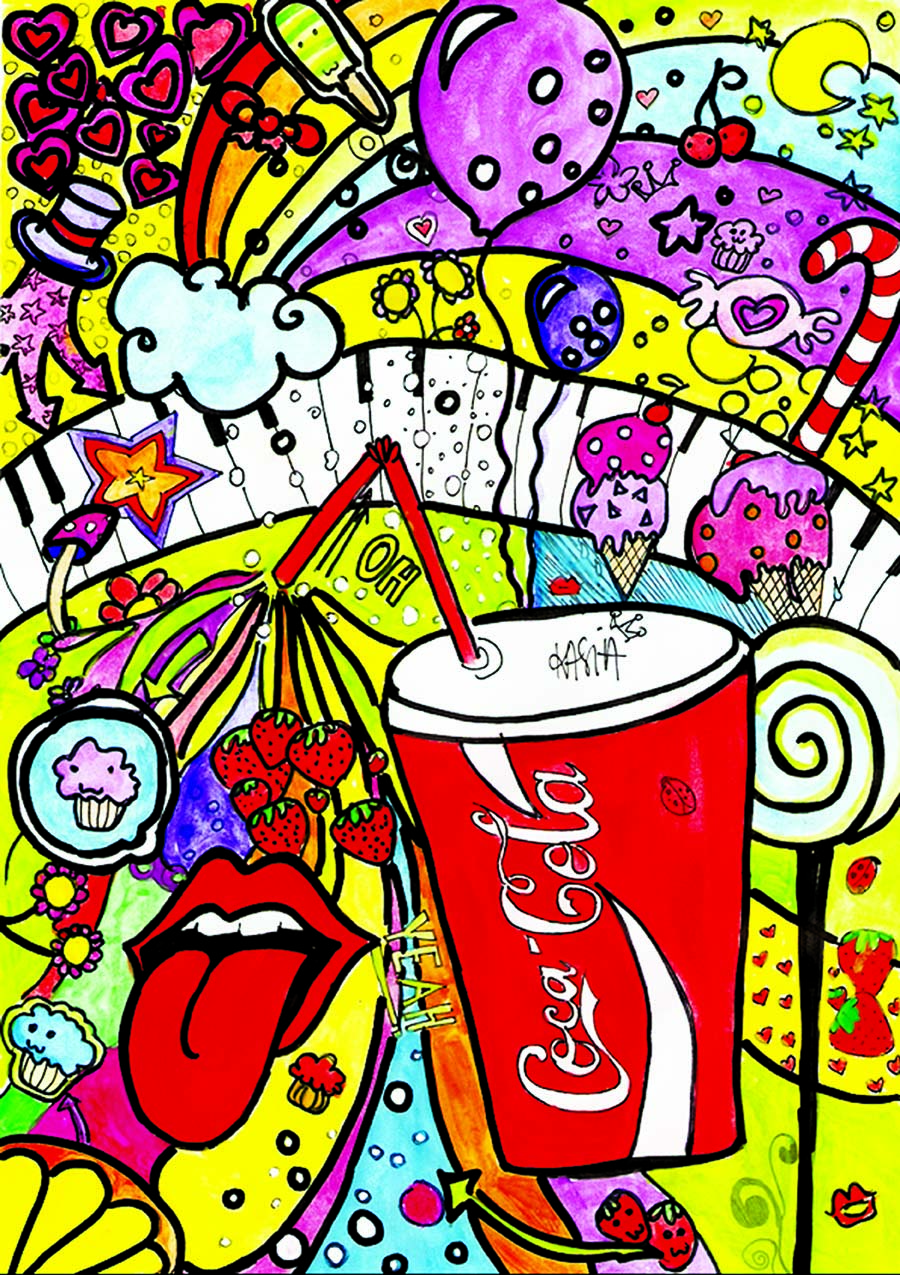
Sheikh Arif Bulbon :Pop Art is an art movement that emerged in the mid-1950s in Britain and in the late 1950s in the USA. It was the brainchild of several young subversive artists – as most modern art tends to be. Pop Art presented a challenge to traditions of fine art by including imagery from popular culture such as advertising, news, etc. In Pop Art, material is sometimes visually removed from its known context, isolated or combined with unrelated material. Pop Art appreciates popular culture, or what we also call ‘material culture.’ It does not critique the consequences of materialism and consumerism. It simply recognises its pervasive presence as a natural fact. The concept of Pop Art refers not as much to the art itself as to the attitudes that led to it. The first application of the term ‘Pop Art’ occurred during discussions among artists who called themselves the Independent Group (IG), which was part of the Institute of Contemporary Art in London, begun around 1952-53.Pop Art employs aspects of mass culture, such as advertising, comic books and mundane cultural objects. It is widely interpreted as a reaction to the then-dominant ideas of abstract expressionism, as well as an expansion upon them. And due to its utilisation of found objects and images it is similar to Dada. Pop Art is aimed to employ images of popular as opposed to elitist culture in art, emphasising the hackneyed or kitschy elements of any given culture, most often through the use of irony. It is also associated with the artists’ use of mechanical means of reproduction or rendering techniques.Pop Art and minimalism are considered to be art movements that precede post-modern art, or are some of the earliest examples of post-modern art themselves.Pop Art often takes as its imagery that which is currently in use in advertising. Product labelling and logos figure prominently in the imagery chosen by pop artists, like in the Campbell’s Soup Cans labels, by Andy Warhol. Even the labelling on the shipping box containing retail items has been used as subject matter in pop art. Acquiring consumer goods, responding to clever advertisements and building more effective forms of mass communication (back then: movies, television, newspapers and magazines) galvanised energy among young people born during the Post-World War II generation. Rebelling against the esoteric vocabulary of abstract art, they wanted to express their optimism after so much hardship and privation in a youthful visual language. Pop Art, for the most part, completed the Modernist movement in the early 1970s, with its optimistic investment in contemporary subject matter. It also ended the Modernism movement by holding up a mirror to contemporary society. Once the Postmodernist generation looked hard and long into the mirror, self-doubt took over and the party atmosphere of Pop Art faded away. Recognisable imagery, drawn from popular media and products, usually very bright colours, flat imagery influenced by comic books and newspaper photographs, images of celebrities or fictional characters in comic books, advertisements and fan magazines and in sculpture, an innovative use of media are the key characteristics of Pop Art. n
